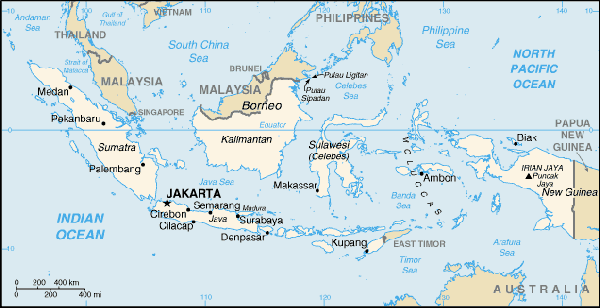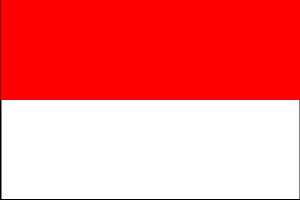
|
Indonesia
Background:
The world's largest archipelago, Indonesia achieved independence from the
Netherlands in 1949. Current issues include: implementing IMF-mandated reforms
of the banking sector, effecting a transition to a popularly-elected government
after four decades of authoritarianism, addressing charges of cronyism and
corruption, holding the military accountable for human rights violations, and
resolving growing separatist pressures in Aceh and Irian Jaya.
|

Climate and Terrain:
Climate: Tropical; hot, humid; more moderate in highlands.
Terrain: Mostly coastal lowlands; larger islands have interior mountains.
|
|
|
Statistics: Telephones - main lines in use: 5,588,310. Telephones - mobile cellular: 1.07 million. Radio broadcast stations: AM 678, FM 43, shortwave 82. Radios: 31.5 million. Television broadcast stations: 41. Televisions: 13.75 million. Internet users: 2 million. Railways: Total: 6,458 km. Highways: Total: 342,700 km, paved: 158,670 km. unpaved: 184,030 km. Airports: 490, with paved runways: 156, with unpaved runways: 339. Heliports: 6. |
|